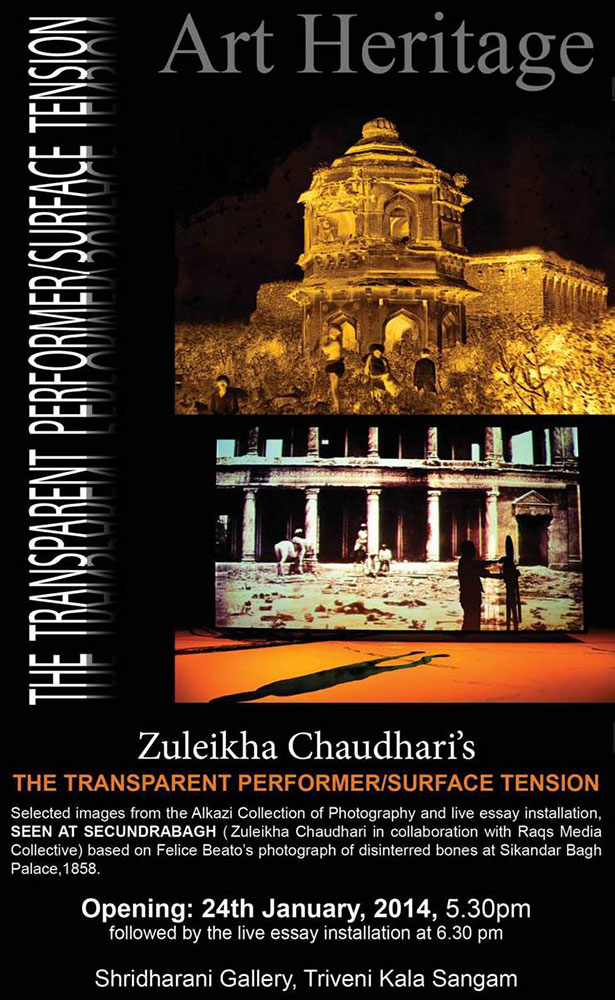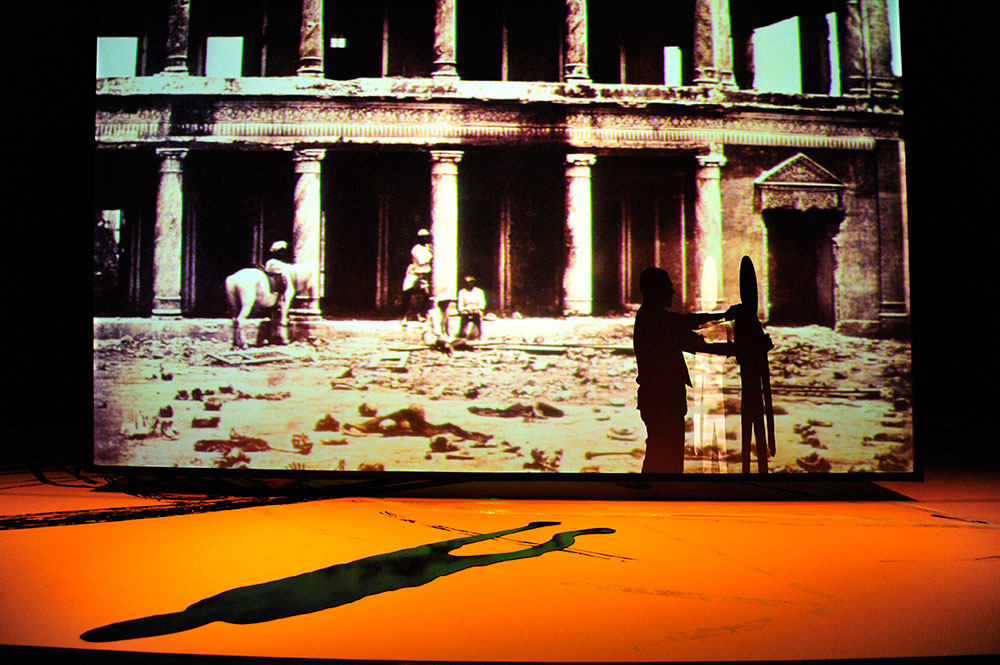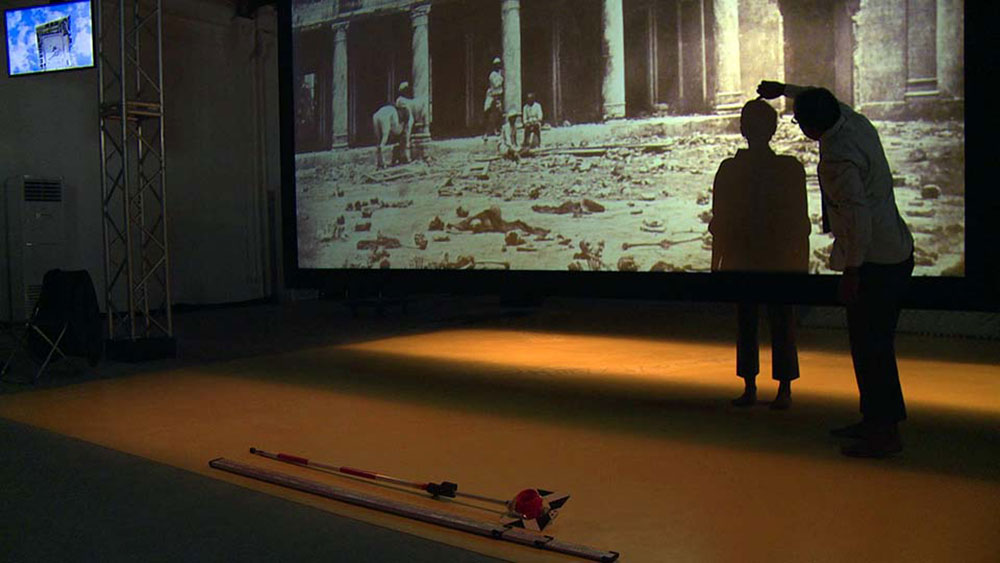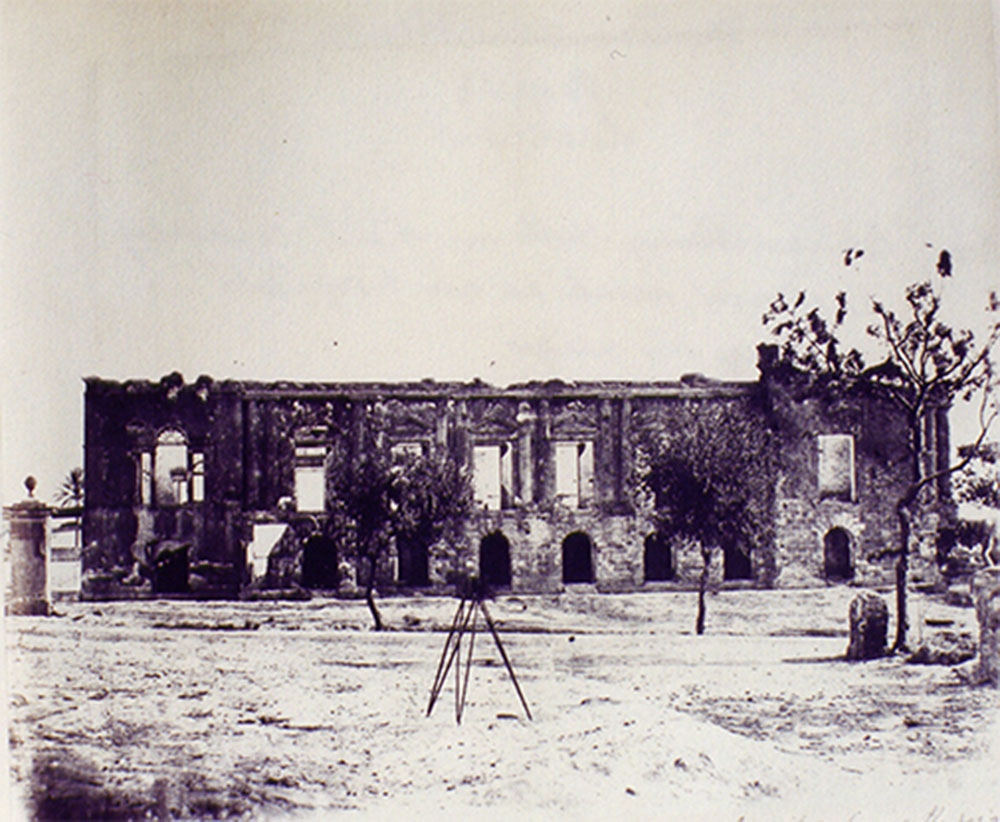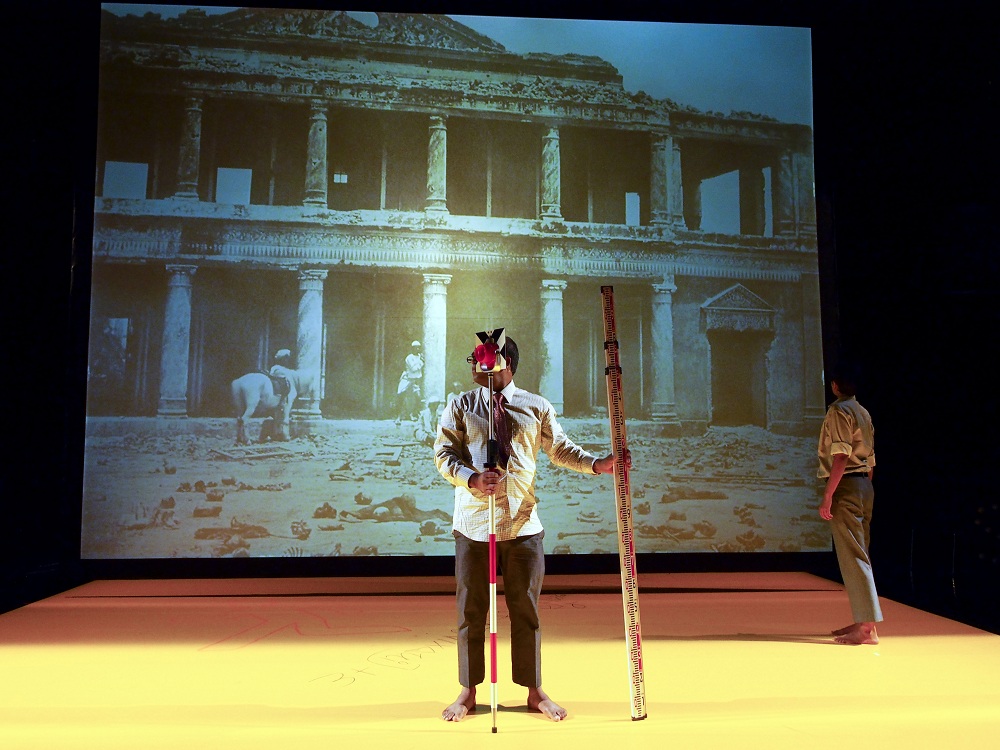PAST EXHIBITION
The Transparent Performer – Surface Tension
The composition of a photograph is the staging of reality. And in this, they are provocative source materials. Any photograph contains features that could be considered to be the elements of a performance – people and place. The perspective of the figures and their relationships to landscapes and events could be considered to be the material with which one could explore the quality of the performer, and forms of performative experiences.
The act of staging allows a moment to transcend its historicity and once this moment is unmoored from its context, it is poised between that which is real and that which is constructed. This is the moment of performance. This relationship between fiction and reality, absence and presence, is what the theatre plays with. Where does the “real” start and where does it end? Where does “fiction” start and where does it end?
The photograph of disinterred bones at Sikandar Bagh Palace features a studied composition of a white horse, four men, and an array of the skeletal remains of several human beings, set against a neoclassical ruin that has seen recent shelling. This photograph was taken in March 1858 by the itinerant war photographer Felice Beato in Lucknow, in the aftermath of the ‘mutiny’ in the army of the East India Company, which eventually led to the consolidation of British imperial rule in India.
The figures in the picture and the performer(s) are not the subjects, but rather, points of reference, and points of view within and of the landscape in which they are situated. They look outwards, pointing away from themselves and drawing attention to details of elements in the landscape that surround them.
The figures in the photograph/s have a neutral gaze. They seem to be detached – at a remove from the event they are ostensibly part of, i.e. both the moment the photograph was taken and the historic moment to which its staging refers. Their neutrality helps us enter the image. The border – of the photograph and of the proscenium arch – dissolves.
When this border dissolves, time is then irrelevant. It expands into a series of nows that are present and continuous. There is no duration. Each successive now, staged and restaged by the performer using scenography as text, is a different surface, producing different experiences.
The three men in the Sikander Bagh photograph look directly at the viewer, while the fourth seems to be looking within the landscape; the performer simultaneously looks around as well as at the viewer, and the viewer looks back at the performer and the image the performer has created. This gaze is triangular. The role of the spectator and the performer collapses; their gaze becomes interchangeable. The performer becomes transparent.
The performer and the spectator are simultaneously within the moment (of the image) as well as outside of it, at once producing distance and proximity. They are as close as possible to the smallest details and equally as far to the whole picture. Each point between these two distances provides new points of view, further details and information, more ideas, and more questions.
In ‘seeing’ this moment, the suspended time of a photograph is made elastic in performance such that we arrive at a stilled time.
The act of looking and measuring is the only event that remains.
Date
24 Jan - 24 Jan 2014
